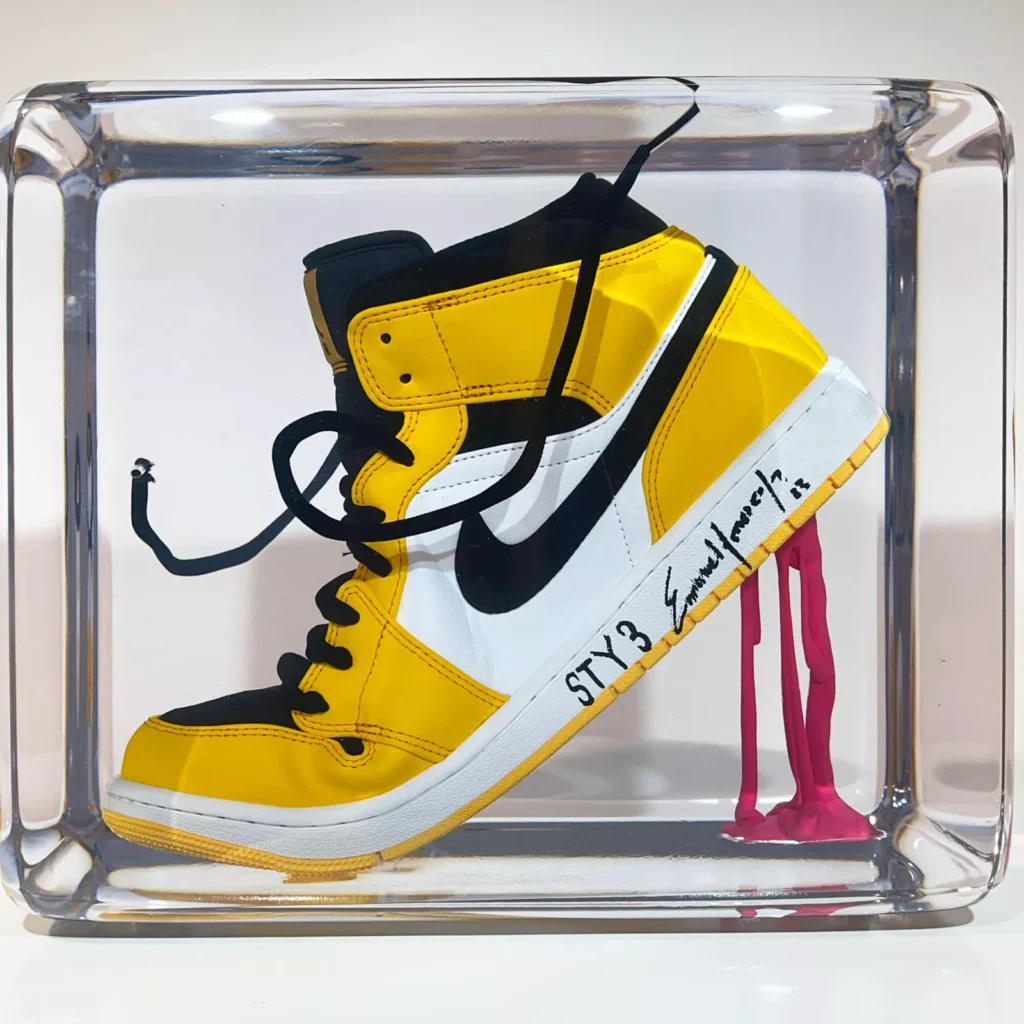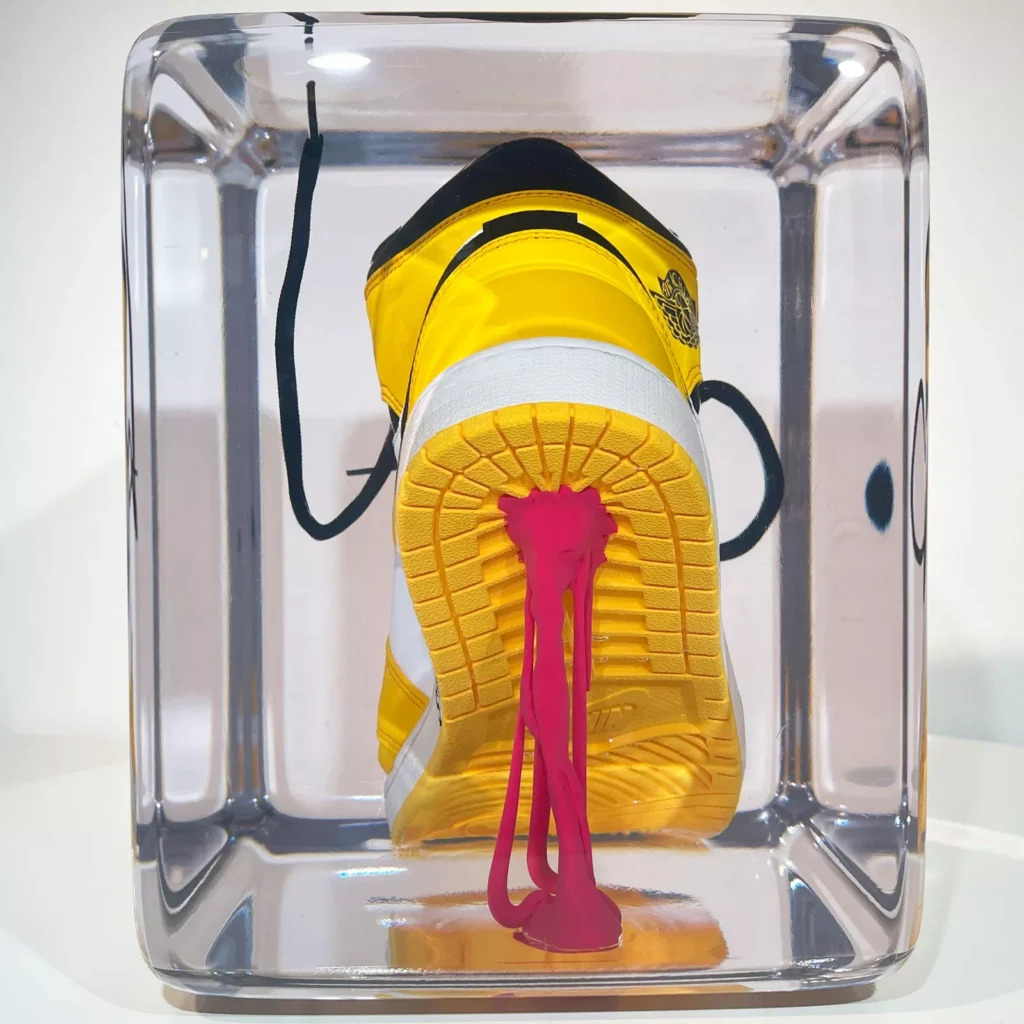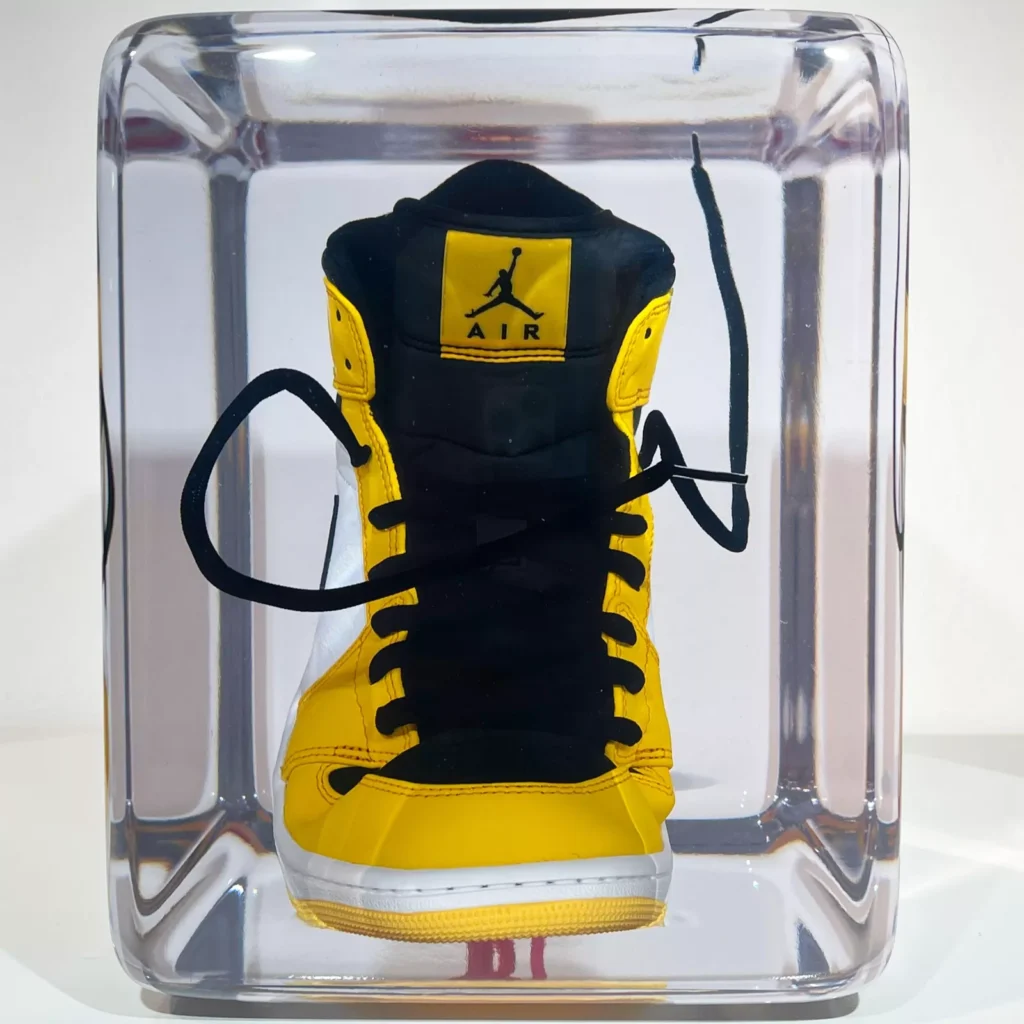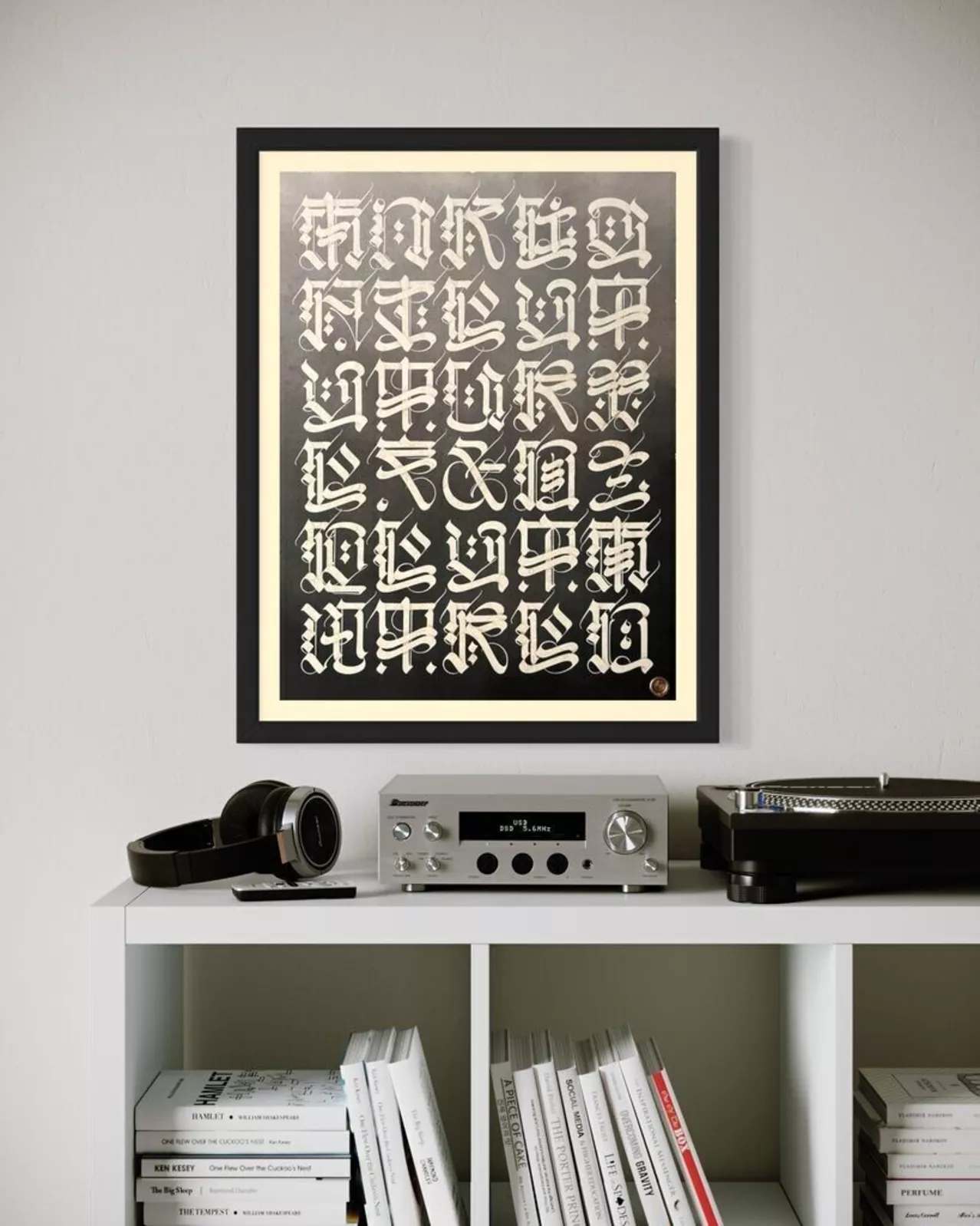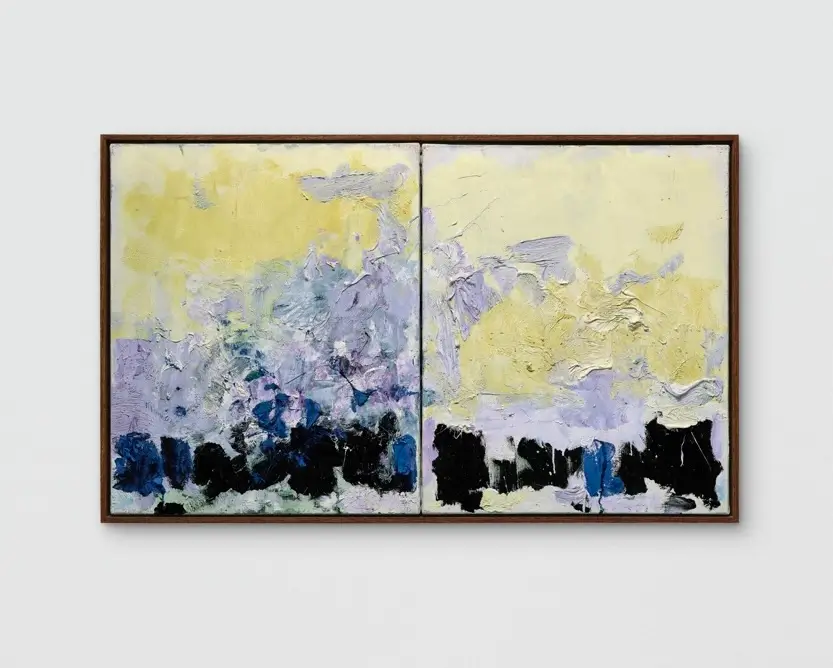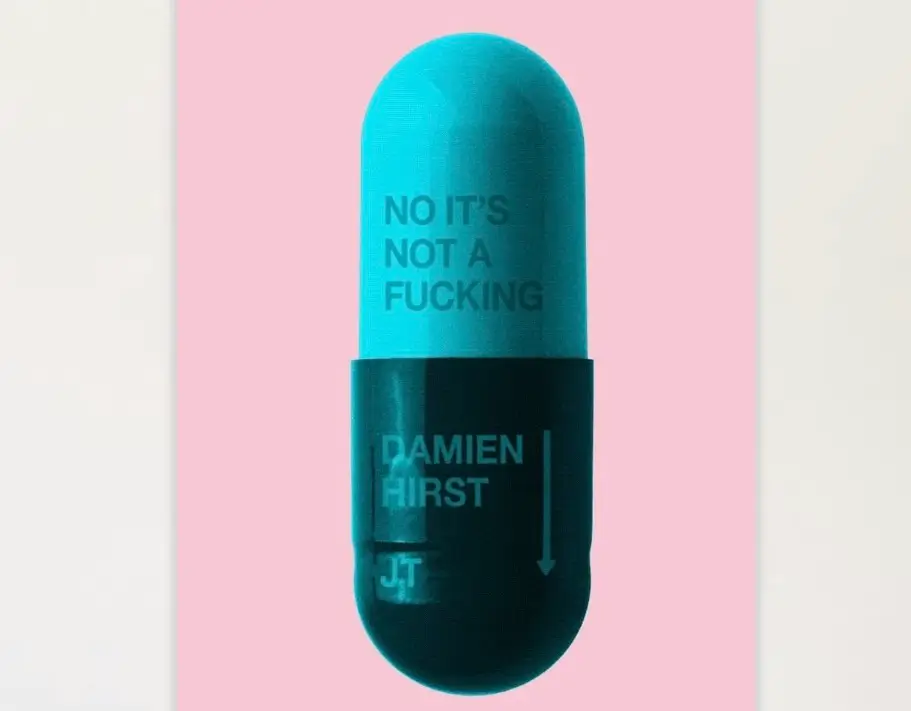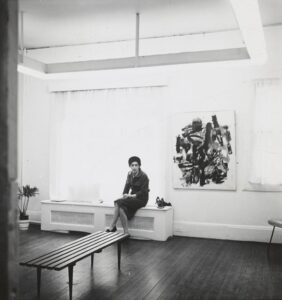Emmanuel Meneses has steadily built a reputation for reimagining cultural icons through sculpture and mixed media, reframing everyday commodities as philosophical artifacts. His 2024 work Sneakers & Gum exemplifies this trajectory. At its core is a Jordan 1 “Taxi Yellow”—a shoe loaded with decades of subcultural history—paired with a surprising, almost play element: a pink piece of bubblegum affixed to its outsole, all sealed within a transparent resin block.
The piece operates in the same critical territory that Pop artists once claimed, where the everyday is elevated and aestheticized. But Meneses injects a distinctly contemporary perspective, one that collides sneakerhead culture, consumer fetishism, and questions of violence. By freezing this shoe-object in resin, he halts its lifecycle as a product and asks the viewer to reconsider its symbolic weight.
The Jordan 1 as Cultural Symbol
The Air Jordan 1 has always transcended its athletic purpose. Released in 1985, the silhouette has morphed from basketball gear to fashion staple to cultural signifier. Its iterations—“Bred,” “Chicago,” “Royal”—carry mythologies that extend far beyond sports. The “Taxi Yellow” color-way draws from New York City’s palette, evoking both movement and street hustle.
To select this particular shoe, Meneses isn’t simply nodding to footwear enthusiasts. He is conjuring the mythology of urban mobility, aspiration, and self-expression. The Jordan 1, particularly in yellow and black, references both speed and caution, freedom and danger. Within the resin, it ceases to be wearable—it becomes untouchable, a relic, both desirable and denied.
The Gum: Coltish and Stoppage
The addition of the pink bubblegum is deceptively simple yet profoundly charged. At first glance, it’s a humorous trope: the image of gum stuck to a shoe sole is universal, a small inconvenience turned into a sculptural punchline. But within Meneses’ lexicon, it also signals stoppage and stickiness.
The shoe—designed for performance, agility, and speed—is suddenly halted by gum. It can no longer run, jump, or even walk. Encased in resin, that halting becomes permanent. The skittish pink color contrasts sharply with the industrial yellow-black of the Jordan, reminding us of the friction between innocence and aggression, leisure and confrontation.
The Title: Sneakers & Gum
The provocation resides in the title. No gum is literally visible in the resin block, yet the word insists on its presence. The shoe becomes the gum by proxy—both fetishized consumer objects, both extensions of identity and power.
Pop, Post-Pop, and Trap Aesthetics
Meneses’ practice often sits at the intersection of Pop Art and contemporary urban iconography. The shoe here echoes Andy Warhol’s Campbell’s Soup Cans or Claes Oldenburg’s giant soft sculptures—everyday icons pulled into the gallery. Yet Meneses’ aesthetic leans closer to a trap sensibility, one attuned to street economies, bootleg culture, and remix aesthetics.
The resin encapsulation is also a nod to collectible culture—where toys, shoes, and trading cards are sealed in packaging to preserve value. Meneses blurs the line between consumer object and art commodity, questioning how much of art’s aura is constructed through scarcity and preservation.
Materiality
The choice of resin is crucial. It arrests decay, freezes time, and creates a glossy barrier between viewer and object. This strategy recalls Damien Hirst’s vitrines or even Joseph Cornell’s boxes, yet Meneses’ tone is sharper, less romantic. Resin here reads as preservation against use: the shoe cannot be worn and the gum cannot be scraped.
No comments yet.

